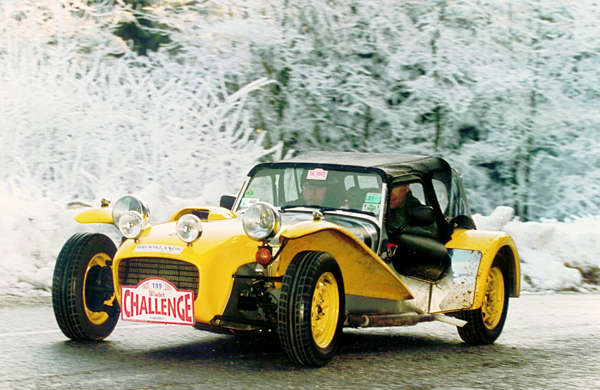| << Chapter < Page | Chapter >> Page > |
As used in the Seven the 1600 cc engine was essentially that from the Ford Cortina GT and used a standard Ford intake manifold with a single Weber 32DFM twin choke downdraught carburetor. The original downdraft Weber 32DFM twin choke downdraught carburetor had melted during the fire ( [link] ) and become fused to the intake manifold ( [link] ).


As a replacement it is still possible to purchase new Weber carburetors (Southern Carburetters or Weber Carbs Direct), however, the 1969 Lotus Seven S3 that I had been previously restored then used on the Millennium Monte in 2000 and the Winter Challenge in 2001 ( [link] ), had been converted to a race car with twin side draft Weber 40 DCOE carburetors ( [link] ). Therefore, it was decided to recondition the old unused Weber 32DFM carburetor ( [link] ).



Even though the carburetor had been working up to the point it was removed, it had not been used in 12 years. It was decided therefore to replace all the gaskets and clean all the jets, etc. The rebuild kit for Weber 32/36 DGV/DFM carburetors is available from Pegasus Auto Racing Supplies (Part No. 1586-18).
The first step was to remove the Formula Ford style carburetor spacer with gaskets ( [link] ). Both new replacement and the standard carburetor-to-manifold gasket (0.063” thick) are available from Pegasus Auto Racing Supplies. The final decision may rest with the clearance of the air filter with the bonnet.

Removal of the air filter housing is accomplished by first undoing the retaining nuts for the top cover ( [link] ), followed by removal of the air filter cover ( [link] ). With the cover of the filter housing removed, the filter is lifted out exposing the four bolts that hold the bottom plate of the air filter housing to the carburetor ( [link] ). Undoing these bolts allows for removal of the bottom plate of the air filter housing from the carburetor ( [link] ). Underneath is a card gasket, which is lifted of ( [link] ) and labeled for reuse ( [link] ).







Notification Switch
Would you like to follow the 'Lotus seven s4 (type 60): design, restoration, and maintenance' conversation and receive update notifications?